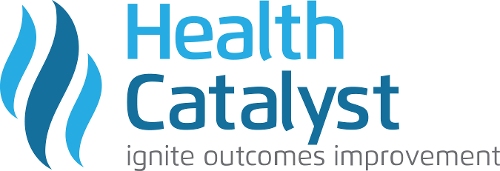Survey: Healthcare Technology Pros See Poor Return On Investment from EHRs
 SALT LAKE CITY, Sept. 14, 2017 — The billions in taxpayer dollars spent on electronic health records (EHRs) since 2009 have unfortunately generated a poor return for the nation’s healthcare system, according to a survey of more than 1,100 healthcare professionals attending the fourth annual Healthcare Analytics Summit™ (HAS 17), Sept. 12-14 in Salt Lake City.
SALT LAKE CITY, Sept. 14, 2017 — The billions in taxpayer dollars spent on electronic health records (EHRs) since 2009 have unfortunately generated a poor return for the nation’s healthcare system, according to a survey of more than 1,100 healthcare professionals attending the fourth annual Healthcare Analytics Summit™ (HAS 17), Sept. 12-14 in Salt Lake City.
Fortunately, survey respondents also overwhelmingly signaled that analytics software—a technology designed to make the clinical data in EHRs more valuable—holds great promise for the future. The divergent views of the two technologies likely reflects the industry’s abrupt shift away from data collection and toward data analysis as healthcare transitions from fee-for-service to value-based reimbursement.
When asked to assess the “return on digital investment” produced by the billions of dollars invested in implementing EHRs since the 2009 federal stimulus program, 61 percent of respondents to the online survey answered either “terrible” (19%) or “poor” (42%). Another 29 percent said the ROI from EHR investments has been “mediocre.” Only 10 percent rated the ROI from EHRs as either “positive” (9%) or “superb” (1%).
By contrast, 83 percent of HAS 17 attendees who responded to a series of online mini-surveys rated analytics as “extremely important” to “the future of healthcare and population health.” Fourteen percent of respondents said analytics is “very important,” while 3 percent rated it “moderately important.” No respondents rated the technology as either “somewhat important” or “not important.”
Analytics progress lags its promise … but optimism is high
Despite their enthusiasm for analytics, most HAS 17 attendees work for organizations that have yet to make full use of the technology’s capabilities. When asked to compare their organizations’ use of analytics with a 4-level scale of analytics sophistication, half (50%) of respondents ranked their organization’s use of analytics as “artisanal,” at the bottom of the scale. According to the model, developed by author and HAS17 keynote Tom Davenport, the four levels or analytics adoption are:
- Artisanal Analytics – the most basic level, consisting mainly of data integration and curation
- Big Data – analytics 2.0, enabling experimentation, open source coding and visual analytics
- The Data Economy – analytics incorporating machine learning, agile methods and change management
- Cognitive Analytics – enabling natural language process, event stream processing, work design and neural networks or deep learning
Survey takers generally aligned with levels 1, 2 or 3 on the scale, with 26 percent assigning “Big Data” standing to their organizations, and 17 percent selecting “data economy” analytics. Only a handful of survey takers (5%) rated their organizations as having achieved the most advanced form of analytics, “cognitive analytics.”
While most healthcare organizations may be early in their adoption of analytics, survey takers overall were optimistic about the technology. Seventy-six percent of respondents said they were either “optimistic” (35%) about the potential of analytics, or rated themselves as “advocates” (41%) who want to “help lead the change and a make a difference.” Much smaller numbers said they were in a “wait and see” mode (9%), or “worried” about other priorities getting in the way of analytics success. Just four percent of survey takers said they were “skeptical” about making analytics work as promised.
Survey results were generated by HAS 17 attendees using the conference’s mobile app to provide answers to questions posed by keynote presenters.
For more information on HAS 17, which is hosted by Health Catalyst, visit https://hasummit.com/.
About Health Catalyst
Health Catalyst is a next-generation data, analytics, and decision-support company, committed to being a catalyst for massive, sustained improvements in healthcare outcomes. We are the leaders in a new era of advanced predictive analytics for population health and value-based care with a suite of machine learning-driven solutions, decades of outcomes-improvement expertise, and an unparalleled ability to integrate data from across the healthcare ecosystem. Our proven data warehousing and analytics platform helps improve quality, add efficiency and lower costs in support of more than 85 million patients for organizations ranging from the largest US health system to forward-thinking physician practices. Our technology and professional services can help you keep patients engaged and healthy in their homes and workplaces, and we can help you optimize care delivery to those patients when it becomes necessary. We are grateful to be recognized by Fortune, Gallup, Glassdoor, Modern Healthcare and a host of others as a Best Place to Work in technology and healthcare. Visit www.healthcatalyst.com, and follow us on Twitter (@HealthCatalyst), LinkedIn and Facebook.
- Tags:
- agile methods
- analytics software
- artisanal analytics
- big data
- change management
- cognitive analytics
- data collection
- data curation
- data integration
- deep learning
- electronic health records (EHRs)
- event stream processing
- fee-for-service
- Health Catalyst
- Healthcare Analytics Summit™ (HAS 17)
- machine learning
- natural language process
- open source coding and visual analytics
- The Data Economy
- Tom Davenport
- Value-Based Reimbursement
- work design and neural networks
- Login to post comments